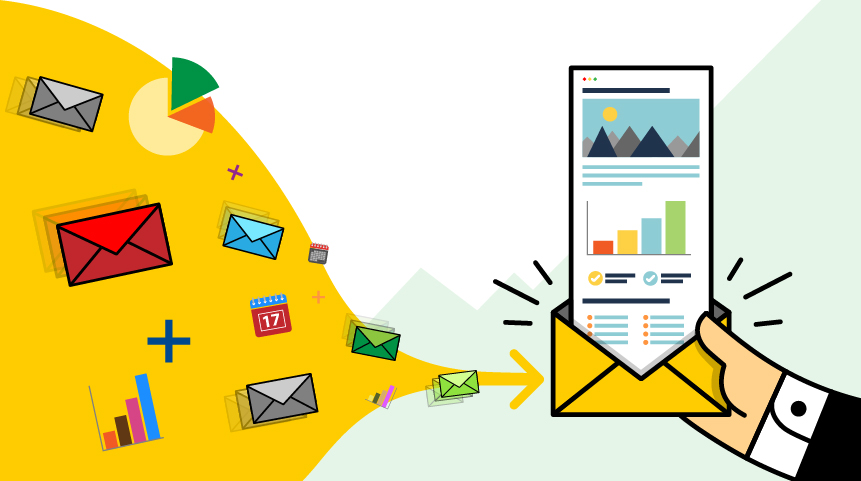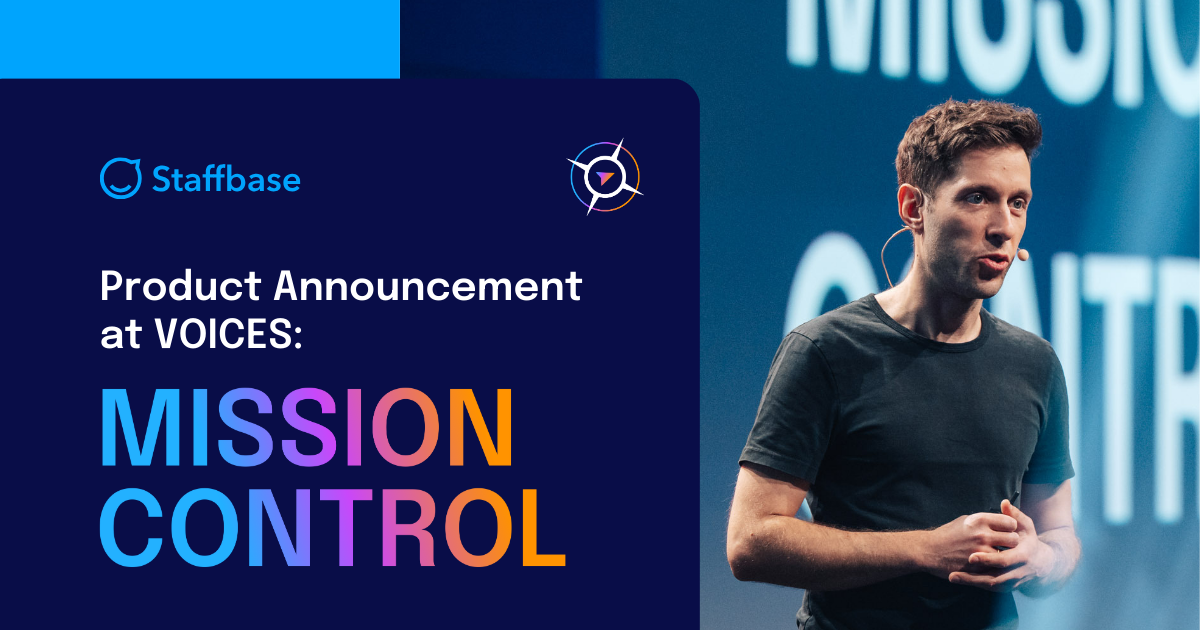This is an internal communications strategy case study of a real Staffbase customer. For privacy and legal reasons we are not allowed to name them, but they have agreed to let us tell their story so we can inspire and help other communicators learn from their experiences.
How to Prove Your Internal Communications Strategy is Working
Jane is an internal communicator at a health care company communicating to 2,000 employees across the US.
Employee population: 2000 employees
Industry: Health care
Communication channels: Outlook + Sharepoint
In the changing US health care industry, there’s a lot of information that internal communicators need to pass on to employees. But with employees scattered across the US, making sure everyone is on the same page is a monumental undertaking.
Jane and her team are responsible for aligning associates with the company’s strategic goals, improving culture and connectedness among a dispersed workforce, and making sure everyone feels like they’re part of the same team.
And that’s why HR came to Jane's team when they were announcing a significant change to their PTO policy.
The email from HR
After asking the internal comms team to announce their new PTO policy, HR was waiting for feedback from employees.
But for the first 48 hours, they didn’t hear anything — not a peep!
Naturally, panic ensued.
Had employees received the email?
Had they read it?
Should they send another email?
HR was putting pressure on Jane and the comms team to send more company-wide emails to ensure employees got the message.
But Jane knew it wasn’t just as simple as sending another email.
Challenge #1 - Communicating change in a complex health organization
The thing is, Jane doesn’t work for your typical health care organization. Her organization manages different business units that provide different services in different hospitals, all over the country.
To make matters more complicated, Jane’s communications compete with communications coming from the various hospitals and clinics where their associates work.
Keeping all of the organization’s associates informed and aligned under one brand is an ongoing challenge.
Challenge #2 - Communicating with a remote, dispersed workforce
Communicating with remote employees is a challenge all on its own.
Making sure employees who are spread across the country have all the information they need to do their jobs and do them well is paramount to a well-functioning organization.
But at Jane’s organization, not only are associates dispersed across the country — they aren’t exactly the desk dwelling types.
Because Jane couldn’t go and talk to them face-to-face, she had no way to track participation, engagement, or whether her messages were being read.
Challenge #3 - Too many internal emails
Because of the remote nature of their workforce, Jane and her team thought email would be the best communication channel to use to reach them.
But there were already a lot of communications going out. Jane admits that there was a new email for every “important” message and no data-backed strategy for how many emails to send out, and to whom.
Sometimes there were emails twice a day to overlapping audiences. And for a workforce that wasn’t often at their desks, all of these emails were becoming overwhelming.
“We didn’t have a good gauge on what emails were working, so we just did whatever.”
And with that overwhelm came a decrease in the effectiveness of the channel overall — which they didn’t even discover until they started measuring their emails with Staffbase.
How to find out if your internal communications strategy is working
Jane and her team knew they needed some way to track and measure their communications so they could judge the effectiveness of their internal email strategy and their internal communications strategy overall.
That’s when they found Staffbase.
Jane and her team used Staffbase Email to back up the insights they gained from internal focus groups and associate surveys, to determine how effective their emails and other communications really were.
“We used [Staffbase Email] as a secondary source of data to reconcile what we found out from talking to employees.”
Surprise, surprise, it turned out that their employees were overwhelmed with emails! And Staffbase Email backed up this sentiment by showing that their open rates were crawling at just 30%.
After reviewing the data they collected with Staffbase Email, Jane and her team realized they needed to use their email channel more strategically.
“It was a good ego check for us. We all think that all of our stuff is very important. All of us. So we had to take a step back and see what was important to our associates.”
So they made a plan: reduce the number of emails to employees and be more specific with what actions they wanted employees to take in the communication, like click a button or register for an event.
This led to the communication team’s bundling strategy. Bundling meant putting everything important into one email, and linking out or providing attachments for more information.
How to prove your internal email strategy is working
Not long after the team implemented email bundling, Jane was shocked to see their open rates double. But it hasn’t stopped there:
“Now that we have been with [Staffbase] for over a year we are getting over 80% even up to 100% open rate on our emails.”
It wasn’t just the open and click rates that were interesting to Jane and her team. They quickly noticed that mobile usage was considerable: 50% of the opens were on mobile devices, and that number keeps growing.
With this data, Jen and her team started to become more conscious of tailoring their emails to their mobile audience. And they also realized that mobile opens were only going to increase.
“We know mobile is going to be the future, so we started looking into mobile email design. A lot of our designs weren’t mobile-friendly and we were getting a lot of complaints.”
Because employees could be opening on any kind of device, they needed designs that were truly responsive. That was when Jane started using the Staffbase Email Designer:
“The emails that we send look great on every device. I really love using the template designer because it is so easy to use. I just drop my content right into the design, bring it over to outlook and send it out. I love it.”
Clearly, email isn’t going anywhere for Jane and her team. In fact, they learned that email was still the #1 communication channel their associates preferred.
“It helps us solidify our other channels by being able to show our internal customers that maybe email isn’t the best channel for their particular campaign and to try a different angle. But we couldn’t do that without [Staffbase].”
How to convince HR not to send more email
So when HR came to Jane with their predicament (no comments or feedback from employees on their PTO policy change email), Jane knew exactly what to do.

She was able to use the open and click data from the PTO email she had tracked with Staffbase Email to show HR that yes, employees did receive the email, and yes, they clicked through to read it!
The data from Staffbase Email showed there was no need to send more emails and Jane was able to prove that the internal email campaign, as well as their overall internal comms strategy, worked!
Based on Jane's communication strategy for the PTO campaign, we've created a sample communication strategy canvas on Miro. Click the block below to explore Jen's campaign strategy.




